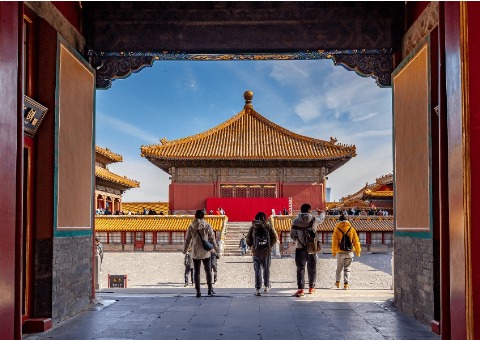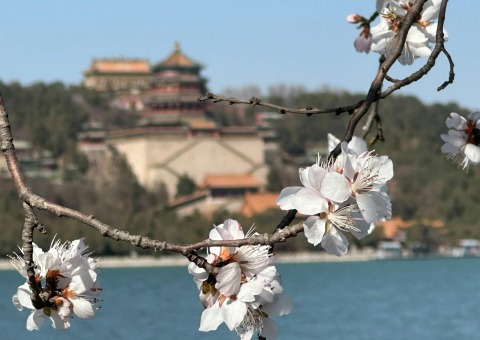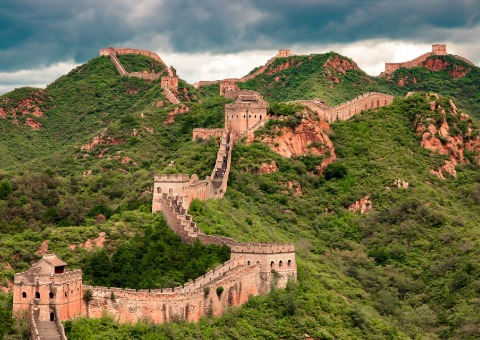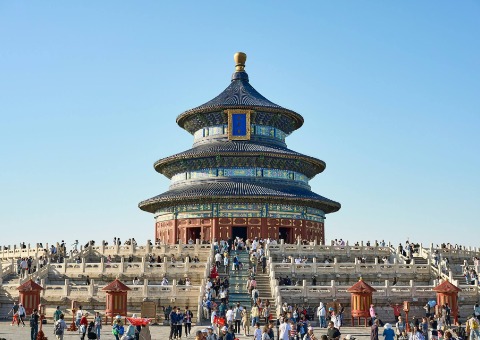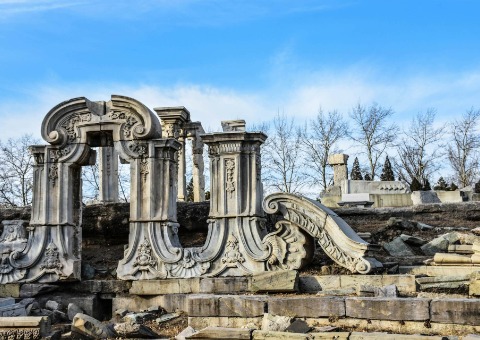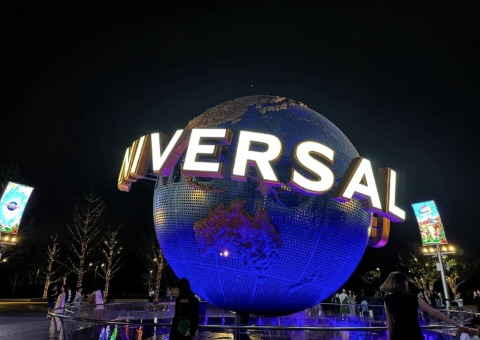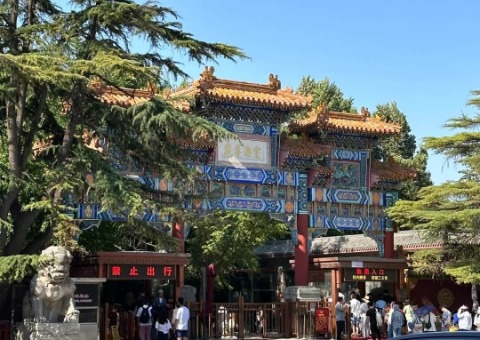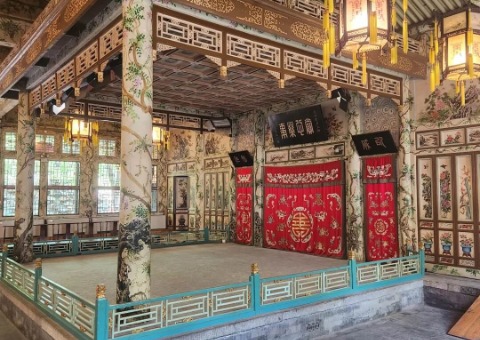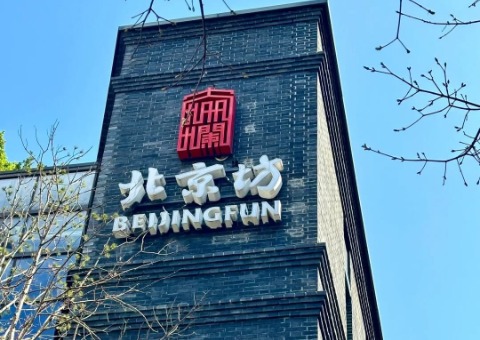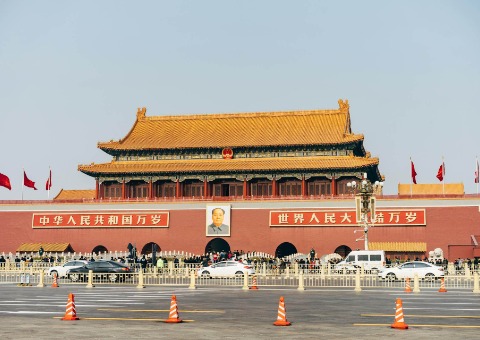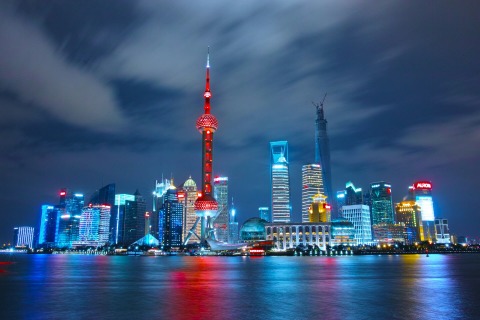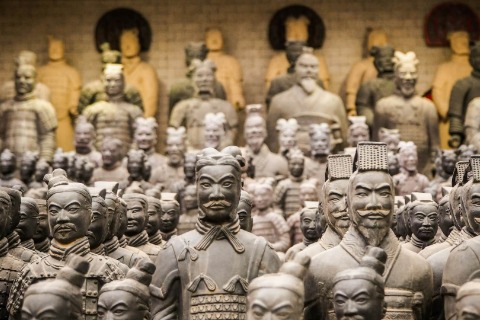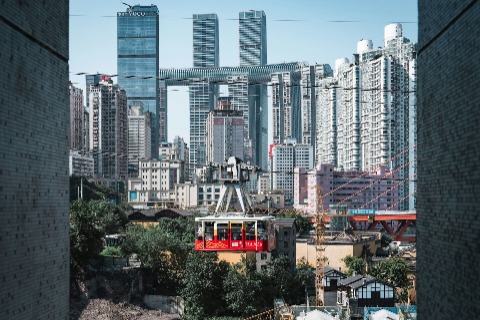Temple of Heaven
Former U.S. Secretary of State Henry Kissinger has visited here 15 times
The Temple of Heaven (天坛), built in 1420 during the Ming Dynasty, was used by the emperors of the Ming and Qing dynasties for heavenly sacrifices, prayers for grain, and rain ceremonies. It is the largest surviving ancient sacrificial complex in China, covering approximately 2.73 million square meters (about 673.54 acres), which is four times the size of the Forbidden City. In 1998, the Temple of Heaven was designated a UNESCO World Heritage Site and is considered one of the must-visit attractions in China.

Today, three of us went to the Temple of Heaven, an important place for ancient Chinese emperors to offer sacrifices to heaven.
As soon as we entered the Temple of Heaven, we were attracted by its solemn atmosphere. The vast Temple of Heaven Park is surrounded by tall walls, like a solemn palace.
Into the park, a beautifully constructed altar and temple into the eyes, giving people a solemn and solemn feeling. Especially the lofty and spectacular Round Altar, which seems to be a channel connected with the sky, gives people a feeling of being close to the gods.Tourist Diary 1
Table of Contents
Highlights of the Temple of Heaven
Hall of Prayer for Good Harvests (Chinese name: 祈年殿)
The Hall of Prayer for Good Harvests is not only the iconic building of the Heavenly Temple but also one of the most representative ancient structures in China. It embodies a combination of ancient philosophy, history, mathematics, mechanics, aesthetics, and ecology. Its design reflects the ancient concept of “revering Heaven and honoring the gods,” with its circular shape symbolizing the heavens and its blue tiles representing the sky, making it a significant site within the Temple of Heaven complex.

Imperial Vault of Heaven (皇穹宇)
The Imperial Vault of Heaven is located north of the Circular Mound Altar. It serves as the place where the ceremonial tablets for worshipping the gods are stored and is dedicated to the deities of the Circular Mound Altar.

Echo Wall (回音壁)
Surrounding the Imperial Vault of Heaven is a circular wall known as the Echo Wall. This structure is famous for its unique acoustic properties. The wall’s distinctive sound phenomenon is due to its perfectly curved shape and exceptionally smooth surface, which allows sound waves to reflect and travel along the wall continuously.

After walking through the Hall of Prayer, we came to a circular enclosure, which is the famous Echo Wall.
As soon as we arrived at the echo wall, my boyfriend and I got busy because we couldn't wait to try out the magic of the echo wall. I stayed put while my boyfriend ran to a place I couldn't see and talked to the echo wall there to see if I could hear him. After he ran away, I pricked up my ears and listened carefully for half a day, but I could only hear other people yelling and screaming next to me, and I couldn't hear his voice. After a while, my boyfriend ran back sweating. He said he had screamed for half a day, but I couldn't hear him.
I think there are too many tourists here and there is too much noise at the site. And now there is a railing in front of the fence, and your ears are too far away from the fence, so you can't hear the echoes today.Tourist Diary 2
Round Altar (園丘)
The Round Altar is where the Winter Solstice ceremonies were held to honor Heaven. The central structure, the Round Altar, is a massive circular stone platform symbolizing the ancient Chinese belief of “Heaven is round, and Earth is square.” Each level of the altar is paved with fan-shaped stone slabs, and the number of slabs at each level is a multiple of nine, reflecting the ancient reverence and awe for the number nine.

Danbi Bridge (丹陛桥)
Danbi Bridge connects the Round Altar with the Hall of Prayer for Good Harvests, forming the main axis of the Temple of Heaven complex. Spanning 360 meters in length and 30 meters in width, it was an important site for the emperor’s ceremonial rituals. The bridge symbolizes the long journey from the human realm to the heavens and reflects the enduring power and majesty of the emperor.

The Altar of Abstinence (斋宫)
The Altar of Abstinence was not only a place where the emperor observed fasting, but also a key representation of the ancient Chinese architectural concept of “revering heaven and honoring deities.” It illustrates the solemn rituals of fasting performed by emperors of the Ming and Qing dynasties before conducting heavenly ceremonies, highlighting the importance of these practices in maintaining social order and religious beliefs.

Just walked into the Temple of Heaven Park, I stayed: the trees are densely packed, some trees have twenty to thirty meters high some trees to two or three people can surround. These trees like a cover to the park as a tightly shrouded up, so that a ray of sunlight can not penetrate into. Grass covered every corner, everywhere is a turquoise "carpet". It was as if this was not a park, but a forest.
Tourist Diary 3
How to Get to the Temple of Heaven
By Bus
- East Gate: Passengers can take bus routes 6, 34, 35, 36, 39, 41, 43, 60, 72, 116, 128, 525, 599, or 684 to Fa Hua Si Station(法华寺站), then enter through the East Gate of the Temple of Heaven.
- South Gate: Passengers can take bus routes 36, 53, 62, 122, 525, 958, Special 11, Special 12 Inner Loop, or Special 12 Outer Loop to the South Gate of the Temple of Heaven.
- West Gate: Passengers can take bus routes 2, 20, 36, 53, 71, 72, 90, 93, 120, 622, Rapid Bus 1, or Special 11 to the West Gate of the Temple of Heaven.
- North Gate: Passengers can take bus routes 6, 34, 35, 36, 72, 106, or 110 to the North Gate of the Temple of Heaven.
By Subway
- East Gate: Take Metro Line 5 and get off at Tiantan Dongmen Station(天坛东门站). Exit through Gate A to reach the main attractions of the Temple of Heaven Park. This is the preferred entrance for visitors, as it is the main entrance to the site.
- North Gate: Take Metro Line 7 to Qiaowan Station(桥湾站), which is close to the attractions and usually less crowded.
- South Gate: Take Metro Line 14 to Jingtai Station(景泰站), then walk about 20 minutes to reach the park.
- West Gate: You can take Metro Line 8 to Tianqiao Station(天桥站) and exit through Gate C.

We visited one of the most famous trees in the Temple of Heaven: the Nine Dragon Cypress. The Nine Dragons Cypress is thousands of years old. The trunk of the tree is very thick. The bark of the tree stretches upward sinuously, just like nine dragons coiled on the tree, from which it got its name.
Tourist Diary 4
Attraction Information
Hours
- April – October: 06:00 – 22:00 (last entry at 9:00 PM)
- November – March: 06:30 – 22:00 (last entry at 9:00 PM)
- Temple of Heaven Park is open every Monday, but the ancient buildings and small attractions inside are closed to the public on that day.
Admission
- Tourist Peak Season (April – October): 34 CNY ( ≈ 4.86 USD)
- Tourist Off-Season (November – March): 30 CNY ( ≈ 4.29USD)
Prohibited Items
- No kites, drones, or other airborne objects are allowed in the park.
- Skating tools like rollerblades and skateboards are prohibited in the park to reduce ground wear and ensure visitor safety.
- Sports equipment like soccer balls is not allowed to prevent damage to park facilities and the environment.
- It is forbidden to bring lighters, flammable, or explosive items.
- Pets are not allowed (only service animals, such as guide dogs, are permitted).
Visitor Services
- Visitors can rent automatic audio guides at the Visitor Service Hall, available in eight languages: Mandarin, Cantonese, English, French, German, Japanese, Korean, and Spanish. The rental fee is 40 yuan (approximately $5.70), with a 100 yuan (approximately $14.30) deposit. The deposit will be refunded upon return of the device.
General Amenities
- Free restrooms
- Restaurant
- Information Counter
- Souvenir Shop
luggage Storage
- The storage point near Tianqiao Subway Station (天桥地铁站)is open from 06:00 to 23:00.
- The storage point near Tiantan Dongmen Subway Station(东门地铁站) is open from 07:00 to 22:00.
- The storage fee for backpacks is 10 yuan (approximately $1.40) per day, and for suitcases, it is 20 yuan (approximately $2.90) per day.
My husband and I went through the echo wall and then arrived at the Hall of Prayer for the Year of the Dragon, and it was so big! The Hall of Prayer for the Year of the Dragon has three floors, each with nine steps, and the pillars on each side of each step are carved with clouds, phoenixes and dragons. The narrator said they are called Cloud Watching Pillar, Phoenix Watching Pillar and Dragon Watching Pillar. The roofs of many of the buildings here are blue, which they say is because it is the place where the ancient emperors made sacrifices to the sky, and the blue color symbolizes the sky.
Tourist Diary 5

Practical Travel Tips
- The ticket is only for park entry; a combo ticket includes access to all the buildings inside the park. Therefore, it’s recommended to buy the 40 yuan (approximately $5.70) combo ticket.
- It’s best to enter through the North Gate, which has no lines, and head straight to the Hall of Prayer for Good Harvests to save waiting time! When leaving, use the West Gate, which is right by the subway station.
- Wear comfortable walking shoes, as Temple of Heaven Park is quite large and requires a lot of walking. In summer, be sure to bring sun protection, and in winter, dress warmly.
Attraction Surprises
Squirrels in the Temple of Heaven (天坛内的松鼠)
The Temple of Heaven is quite large, and squirrels enjoy roaming in areas dense with pine, cypress, and walnut trees. Common species here include the Siberian chipmunk and the red-bellied squirrel. You can attract them by clashing two walnuts together, and they will come to the sound. You can feed them walnuts, peanuts, pistachios, and chestnuts.

Cute Temple of Heaven Ice Cream (天坛文创雪糕)
Ice cream is sold at both the entrance and inside the Temple of Heaven, priced at 25 yuan (approximately $3.50) each.

Temple of Heaven Fridge Magnet (天坛文创冰箱贴)
Visitors can purchase “24 Solar Terms” fridge magnets at the cultural and creative shop in the park. These magnets feature a rotating dial and are priced between 68 and 120 yuan (approximately $9.80 to $17.20).


